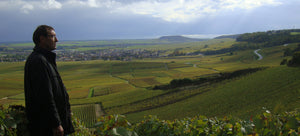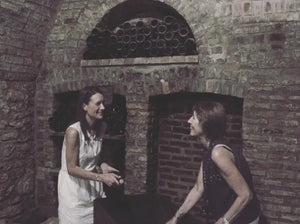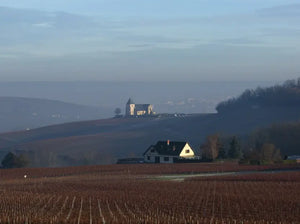Blog » Champagne
-
Holding Nothing Back: Champagne Larmandier-BernierNo producer in the Blanc de Blancs champagne category nails the low dosage form better than Larmandier-Bernier of Vertus. Pierre and Sophie Larmandier have been pioneers since going complete biodynamic farming in 1999, way ahead of the curve. The protocol here is harvesting at maximum ripeness and wines going through full malolactic fermentation in large oak vessels––allowing these low-dosage wines to avoid coming off austere or shrill. These are champagnes full of charm and personality while showcasing the chalky terroir of the Côte de Blancs with precision. They've led by example, with dozens of grower-producers following a similar philosophy in the vines and cellar, but nobody has excelled at the level of Larmandier-Bernier.Latitude, from deeper clay soils over chalk, is broader, with slightly richer tones of crisp orchard and citrus fruit, with baked brioche notes on the finish. Sourced from Premier Cru Vertus.Longitude is sourced from Grand Cru villages Caramant, Avize, Oger, and Vertus. Topsoils are more shallow, hitting pure chalky limestone immediately. Comparatively, this is more incisive and linear, with an obvious conclusion of chalky minerality.Rosé de Saignée is among my favorite wines in Champagne. The best Pinot Noir clusters are held separately for this cuvée, which sees maceration for a couple of days to pull out the brilliant color. Raspberry, plum, and ripe red berry notes give a full-bodied frame. Yet, the two grams/liter dosage keeps this so perfectly mineral and dry tasting that it's the kind of gastronomic rosé champagne you can pair with grilled meats–I challenge you!
-
House Champagne Hero: J. Lassalle
Champagne from the grower-producers is better than ever. The writing was on the wall when I was living in France in 2012, and it felt like a sea change was underway––I was probably late to notice, but still, names like Agrapart and Chartogne-Taillet became part of my weekly hauls from the local shops in Beaune. One of the names that I was introduced to early on was J. Lassalle. And, though their entry-level pricing has remained astonishingly low at $40, all their champagnes punch well above their price point.
The rosé champagne is a wine that holds a special place in my heart within its category. The pale copper-hued stunner has perfect balance and expertly judged ripeness and dosage. However, I'd be remiss if I didn't use this time to talk more in-depth about the Cachet d'Or 1er Cru Brut Réserve––at $40, it's the most obvious price anomaly in the world of grower-champagne. Aged for three years on lees before disgorgement, it carries both the rich brioche notes you'd desire, with all the finely-woven chalky minerality that is a prereq to go hand-in-hand with the more recognized grower names that sell for double the price. The blend is as classic as the style––equal parts Pinot Noir, Pinot Meunier, and Chardonnay, all from 50+-year-old vines in Premier Cru villages in the Montagne de Reims.
In 1982, after founder Jules Lassalle's passing, his wife, Olga, and their daughter, Chantal, took the reins. In 2006, Chantal's daughter, Angéline, took over as winemaker. "Une femme, un esprit, un style" (one woman, one spirit, one style). The inimitable Kermit Lynch has imported J. Lassalle for over 50 years––the longest relationship in his portfolio of legendary names. -
Pinot Meunier Whisperer: Laherte Freres
Tucked between the Côte de Blancs and the Vallée de la Marne, Aurélian Laherte has almost single-handedly put the tiny Côteaux Sud d’Epernay on the map with his truly singular and brilliant work focusing on Pinot Meunier.
This 1889-founded domaine has followed an organic and biodynamic path since Aurelian took the reins in 2005. He opts for old Burgundy barrels, partially or fully blocks malolactic fermentation, and keeps dosage between very low to zero, giving wines with body and texture but a precise and saline-driven mineral backbone—a combo that really appeals to me.
Laherte's Ultradition Extra Brut has been a house champagne for us for many years. Now, the secret is out, and we’re limited to as few as 12 bottles a year. At $53, the value cannot be overstated. There's also the micro-production cuvées from single parcels that are off the charts.
.svg?v=162776257677185172071677832259)





